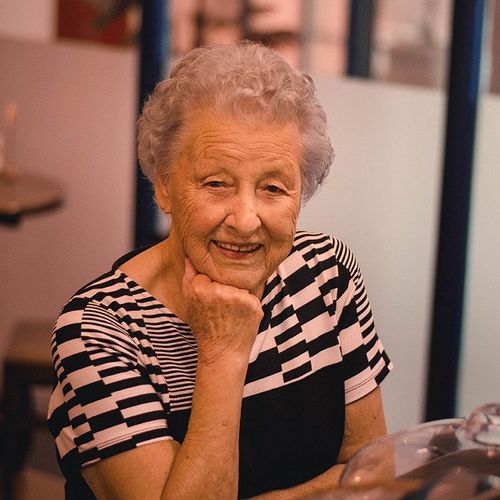The 86-year-old mother of a friend of mine recently underwent surgery for a problem that was not life-threatening. She developed an infection when she was in the hospital, and because of her frail state, she also developed heart and kidney failure. She ultimately died as a result of the treatment.
Doctors in the US save perhaps millions of lives every year with a disease-focused approach that includes diagnosing and treating problems such as high blood pressure and elevated cholesterol. But in some people age 80 and older, this approach can lead to death by intensive care" if the physical and mental frailties that come frequently with age aren't considered. And some people in their 70s are already frail. Preliminary research from The Dartmouth Atlas of Health Care points out that carefully considered G.e., less) care may lead to equal or better outcomes.
Recent development: Some older adults are now opting for an approach known as slow medicine, which allows families and health professionals to put more careful thought into recommended testing and treatment.
The Bigger Picture
The tests and treatments used most often in our medical system are primarily based on studies of adults age 60 and younger.
The same data are not available for older adults, yet doctors usually treat both age groups the same. Imagine an 85-year-old with no symptoms or history of heart disease. Most doctors would advise him to have an occasional cholesterol test, followed by therapy with a statin drug if the numbers weren't ideal.
However, age alone is the biggest risk factor for heart disease, and patients and families are rarely told how little is changed by recommend ed treatments. There's no solid evidence that a statin will change the life course in an older adult with no history of heart problems.
Always ask: Why do this test or start this treatment? What if I don't do it? A certain percentage of people taking a statin will develop muscle pain or other side effects.
Take It Slow
In my opinion, a "slow medicine review" should replace the standard medical exam for many older adults. It includes some of the same components as any other checkup (including having another person present to help process information from the doctor), but with important differences. For example...
- No rush. Most of the decisions made during office visits, such as writing prescriptions and ordering tests, are not urgent. The doctor can give his/her advice, then let the patient decide what to do later.
Example: Suppose you have sleep problems. A doctor might recommend over-the-counter Tylenol PM. This medication is generally safe, but the doctor should explain that it contains diphenhydramine, an antihistamine that can impair cognition and increase the risk for falls in older adults. You might take a few days to weigh the risks and benefits of the drug—then decide whether to take it or ask for an alternative.
- Check and double-check. Since there's a greater risk for adverse effects from drugs and treatments prescribed for older adults than for younger adults, both doctors and patients should be cautious about making changes.
Example: An 80-year-old with a history of high blood pressure might have an elevated blood pressure reading during an office visit. The standard advice would be to change the drug or dosage, but higher doses and new drugs increase the risk for side effects.
In a slow-medicine review, the doctor would tell the patient to check his pressure at home or at a senior center or pharmacy for a few weeks to make sure that the high readings accurately reflect what's happening. Only then would he recommend making changes.
My advice: You rarely need to make any changes based on the findings of one visit. Few problems are life-threatening.
Unnecessary Screenings
Many tests are unnecessary in older adults.
It's estimated that 90% or more of men in their 80s will have some degree of prostate cancer. In the majority of cases, the cancer will never cause problems. Why put patients through prostate-specific antigen (PSA) testing and the risk for subsequent biopsies-for a condition that will never need treatment?
It does make sense for all men to have a digital rectal exam during an office visit. If a tumor is large enough to feel, it's large enough to treat. However, health outcomes are rarely improved by routine PSA screening for men over age 80.
Similarly, mammograms in women over age 80 are rarely necessary.
Make A 72-Hour Visit To A Loved One
If you have a friend or relative in your life who is over age 80, it's wise to spend 72 uninterrupted hours with that person once a year. Learn how the person is doing by watching how he/she functions and copes with daily life. For example…
- Observe the little things. See how the person does with routine activities, such as buttoning a shirt. When he opens the mail, can he differentiate between advertising and a credit card bill?
You may notice things that need attention before they turn into something worse. Someone who can't button a shirt, for example, might need more effective arthritis treatment. Mental confusion might mean early-stage Alzheimer's—or it could be something as treatable as a B vitamin deficiency.
- Check mobility. Can your loved one move easily from one room to the next without tripping or bumping into things? People with balance problems need to address them immediately-falls are among the leading causes of accidents and death in older adults. Most people can improve significantly by doing exercise to gain strength and better balance.
- Is there social support? Older adults with strong social networks stay healthier and live longer than those who don't have much contact with others
If your loved one doesn't have these networks, encourage him to spend more time with others. Any social contact helps people stay healthier longer.
At a later date, discuss your observations with your loved one and perhaps his doctor.
